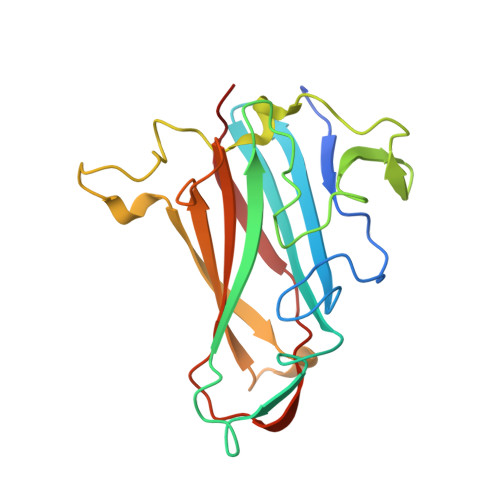Design, Synthesis, and Evaluation of N-Acyl Modified Sialic Acids as Inhibitors of Adenoviruses Causing Epidemic Keratoconjunctivitis.
Johansson, S., Nilsson, E., Qian, W., Guilligay, D., Crepin, T., Cusack, S., Arnberg, N., Elofsson, M.(2009) J Med Chem 52: 3666
- PubMed: 19456100
- DOI: https://doi.org/10.1021/jm801609s
- Primary Citation of Related Structures:
2WGT, 2WGU - PubMed Abstract:
The adenovirus serotype Ad37 binds to and infects human corneal epithelial (HCE) cells through attachment to cellular glycoproteins carrying terminal sialic acids. By use of the crystallographic structure of the sialic acid-interacting domain of the Ad37 fiber protein in complex with sialyllactose, a set of N-acyl modified sialic acids were designed to improve binding affinity through increased hydrophobic interactions. These N-acyl modified sialic acids and their corresponding multivalent human serum albumin (HSA) conjugates were synthesized and tested in Ad37 cell binding and cell infectivity assays. Compounds bearing small substituents were as effective inhibitors as sialic acid. X-ray crystallography and overlays with the Ad37-sialyllactose complex showed that the N-acyl modified sialic acids were positioned in the same orientation as sialic acid. Their multivalent counterparts achieved a strong multivalency effect and were more effective to prevent infection than the monomers. Unfortunately, they were less active as inhibitors than multivalent sialic acid.
Organizational Affiliation:
Department of Chemistry, Umeå University, SE-901 87 Umeå, Sweden.
















